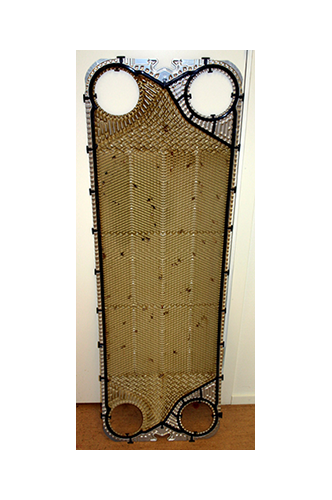Grafenbaserat korrosionsskydd med antifouling egenskaper för plattvärmeväxlare

Syfte och mål
Syftet med projektet var att utveckla en multifunktionell kompositbeläggning för plattvärmeväxlare genom användning av grafen och relaterade material (GRM) som specialtillverkats för ändamålet.
För att passa olika krävande vattenbaserade tillämpningar bör beläggningen ge korrosionsskydd i krävande marina miljöer upp till 90 °C och samtidigt förhindra påväxt i processvatten från exempelvis livsmedelsindustrin.
Förväntade effekter och resultat
Beläggningen skall vara färdig för validering av Alfa Laval tillsammans med utvalda slutanvändare under 2017-2018.
Genom att ersätta titanbaserade värmeväxlare med belagt rostfritt stål kan kostnaderna minskas med 60-70 procent. Marknadsstorleken för kostnadseffektiva belagda plattvärmeväxlare uppskattas till 120 miljoner € per år.
Resultat
Ett grafen eller grafenrelaterat material (GRM) baserat beläggningssystem har utvecklats för plattvärmeväxlare i krävande vattenhaltiga applikationer.
Beläggningen utvecklades för att erhålla ett värmeledande korrosionsskydd och anti-biofouleringsskikt på rostfritt stål. För att uppnå en grafenbeläggning med god vidhäftning på den rostfria ytan måste olika parametrar väljas, såsom: ytbehandling, användning av primers, ett lämpligt bindemedel, grafenplättens storlek och tillsättning av additiv. Den utvecklade beläggningen befanns vara resistent mot 3,5% NaCl vid 85 ° C.
De långsiktiga barriäregenskaperna hos belagda plattvärmeväxlare, som planerades att utvärderas av Alfa Laval, har inte avslutats på grund av svårigheter att spruta beläggningarna på värmeväxlarplattorna.
Under projektet upptäcktes att bindemedlets natur och storleken på grafenplättarna var kritiska för en bra prestanda av beläggningen i korrosiva miljöer.
Även om grafenbaserade beläggningar har en stor potential som både korrosions- och antifoulingapplikationer, är det inte möjligt att använda det i kommersiella beläggningar för plattvärmeväxlare under de närmaste åren. Följande utmaningar hindrar grafenbeläggningar kommersialisering för plattvärmeväxlare applikationer:
• Pålitlig kvalitet
• Uppskalning av produktionen
• Appplieringsmetoder
• Konkurrenskraftigt pris
Projektet skulle haft nytta av att ha en partner med erfarenhet av att spraya grafendispersioner på värmeväxlareplattor.


